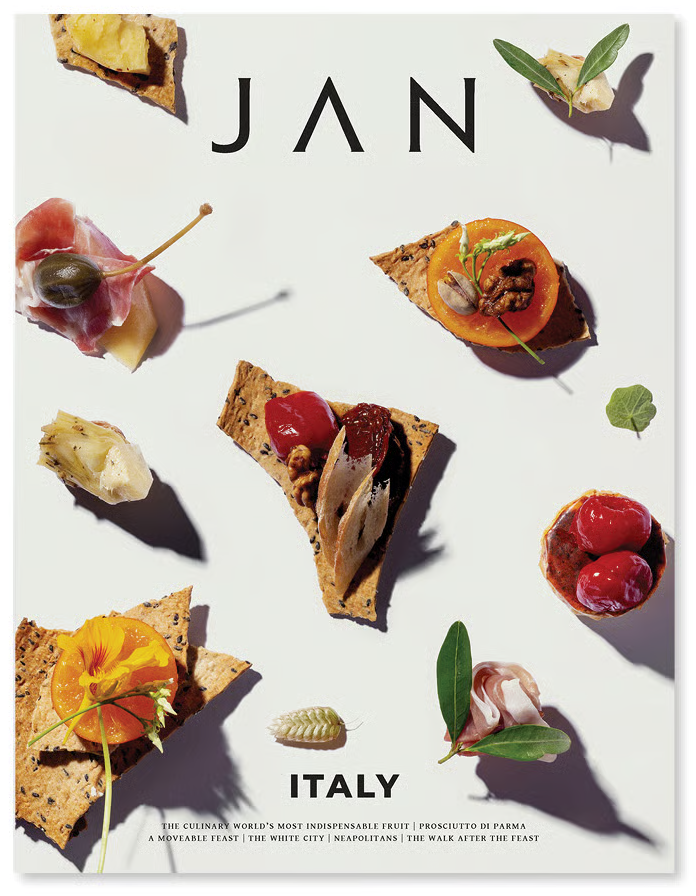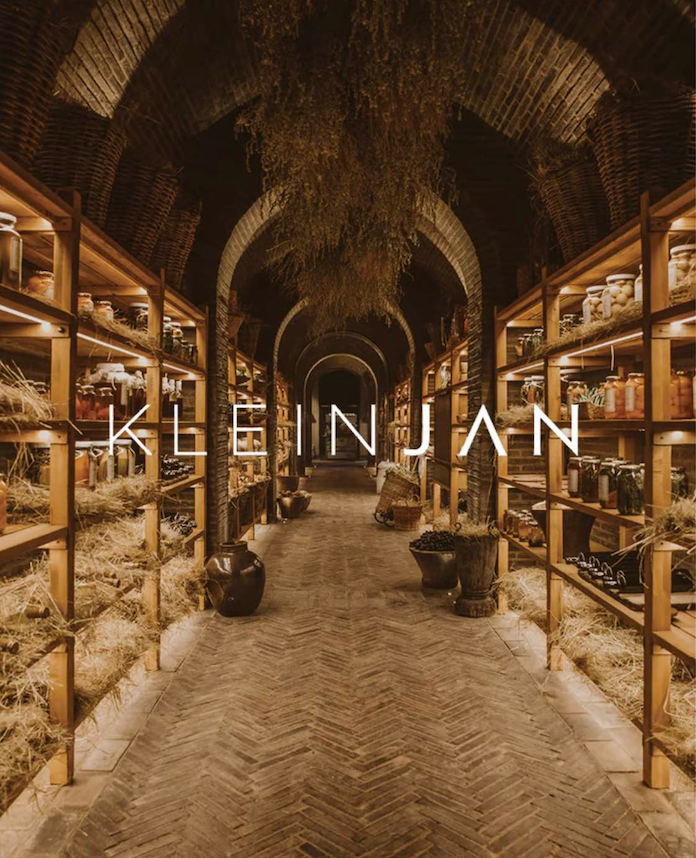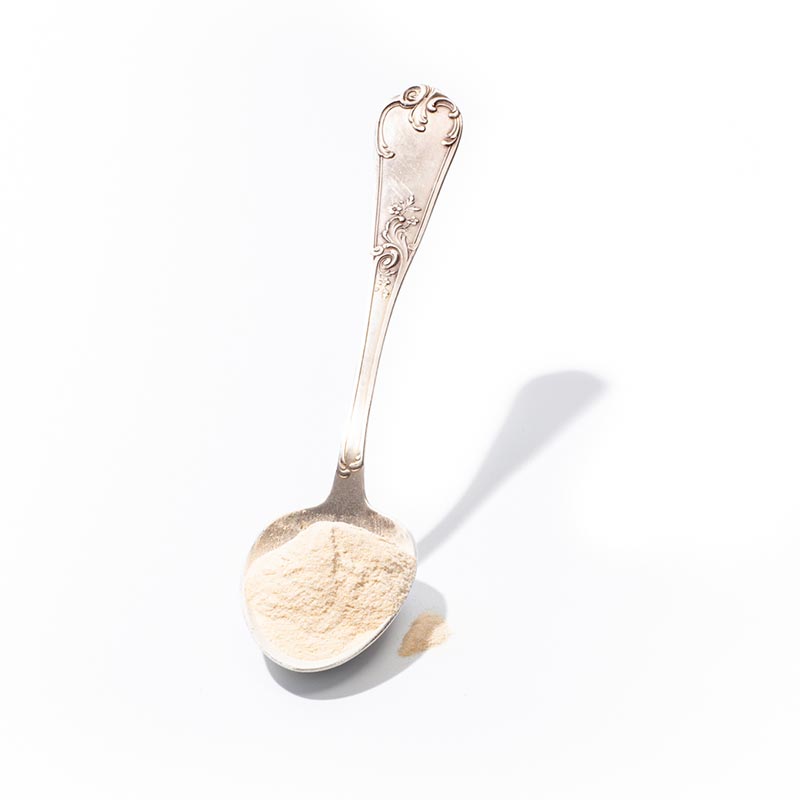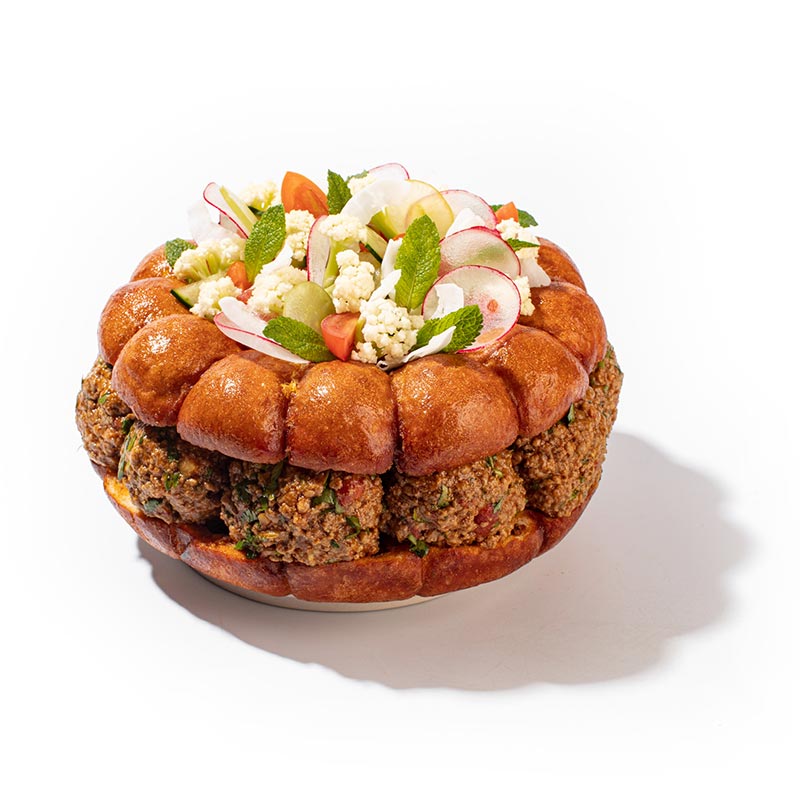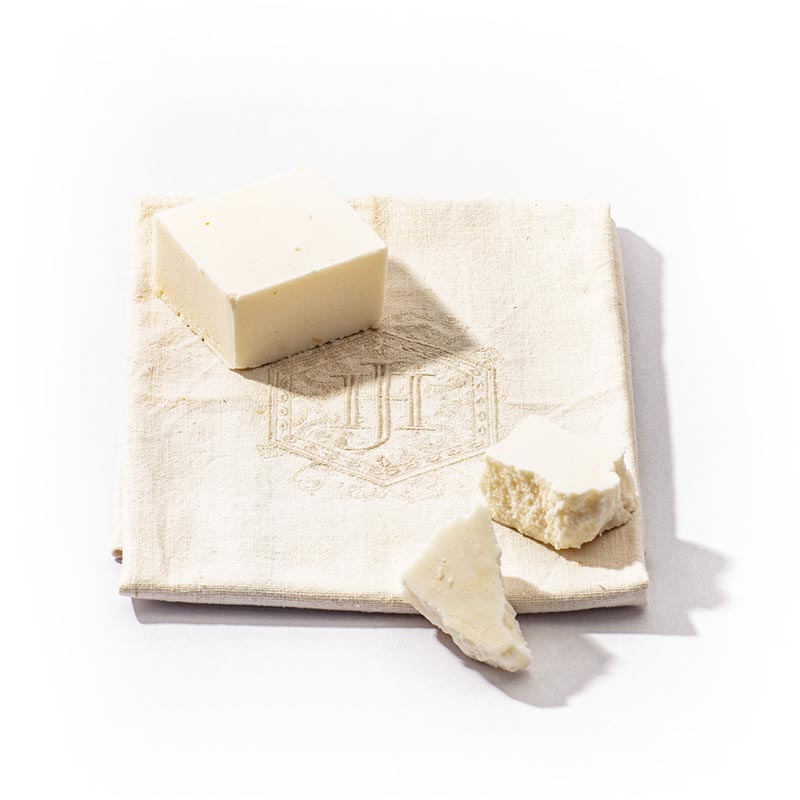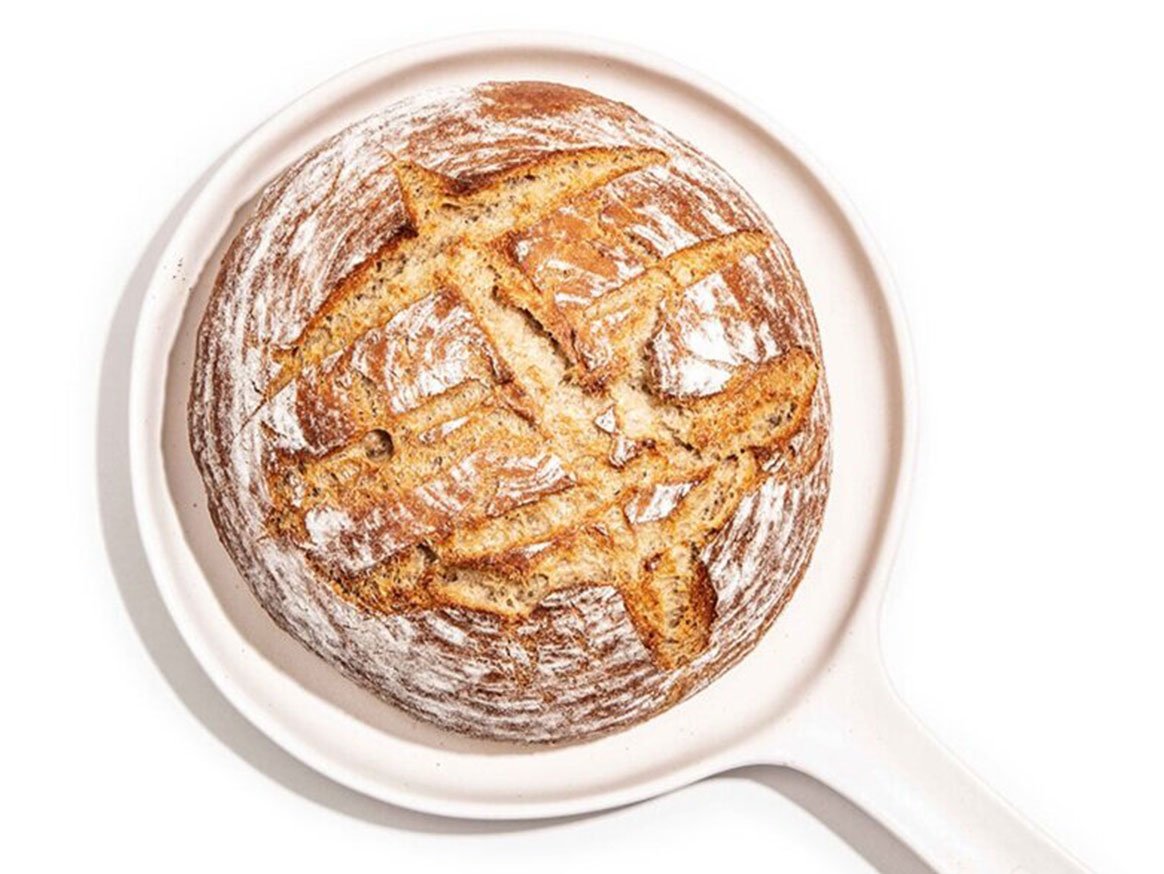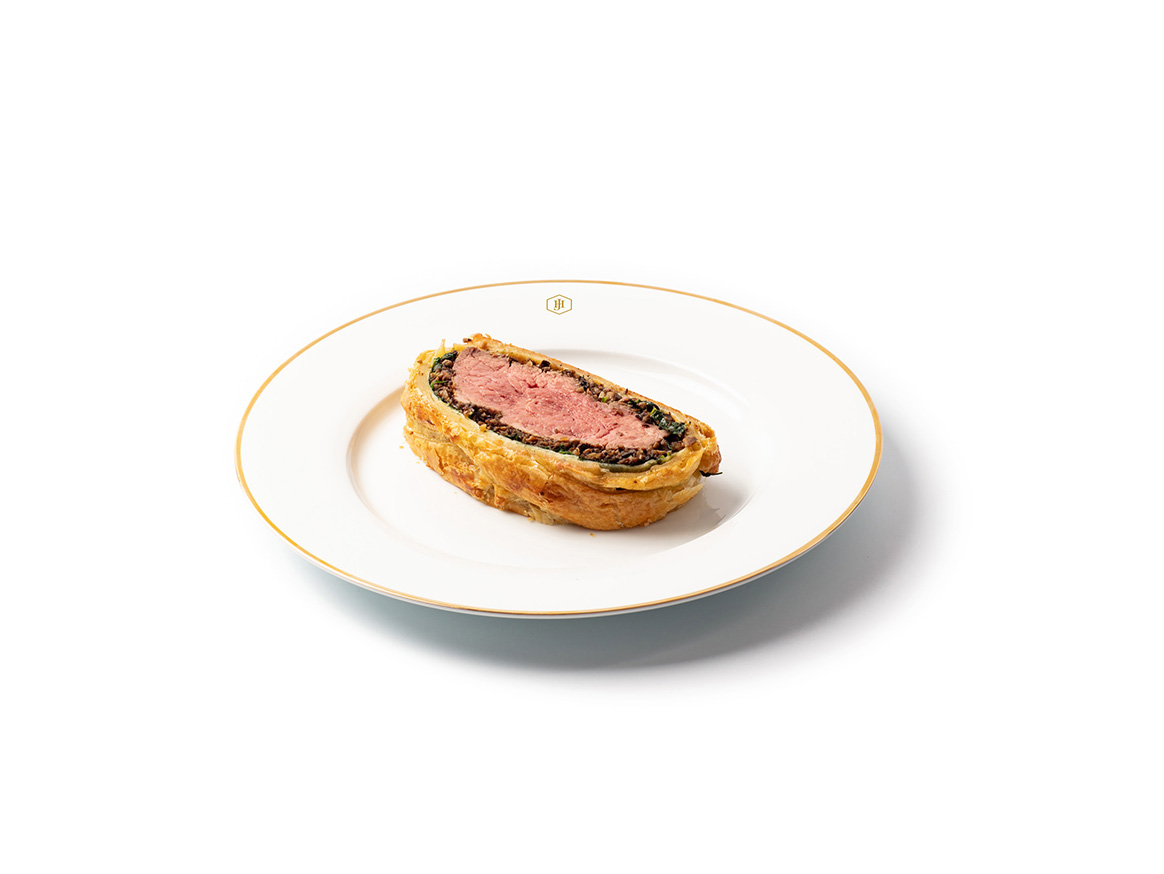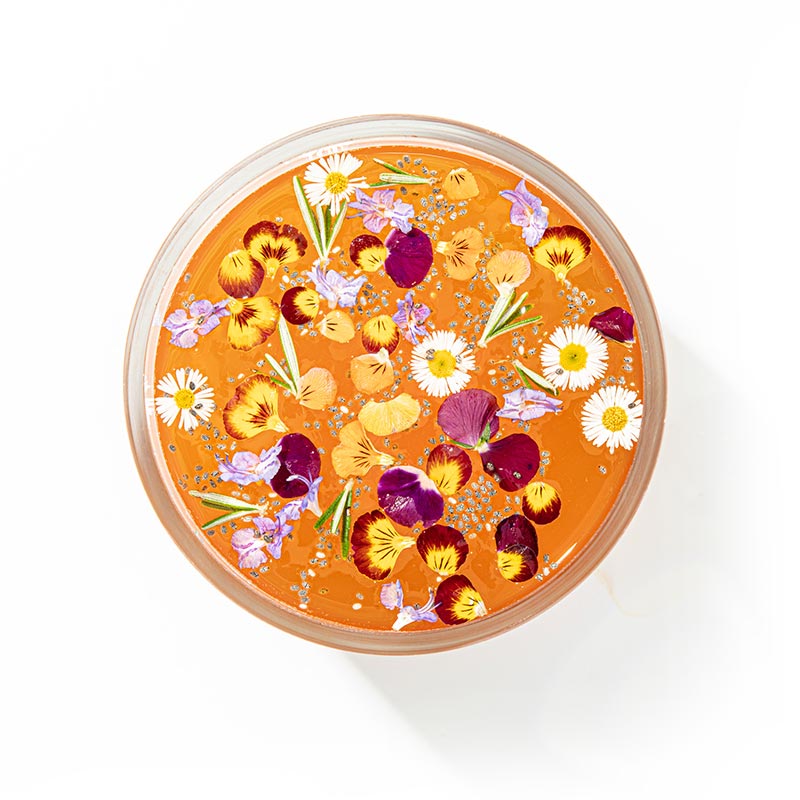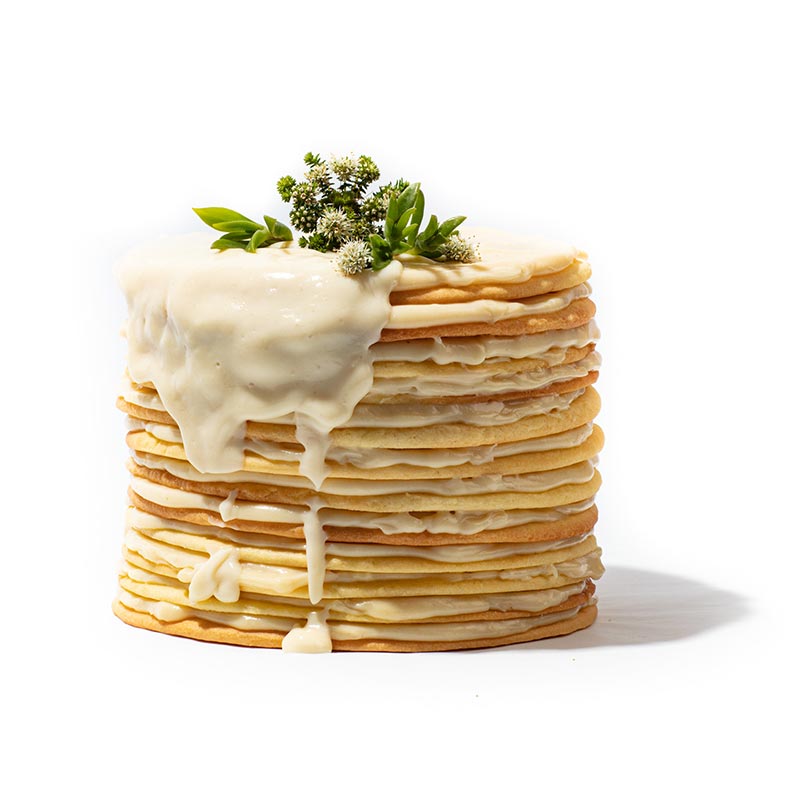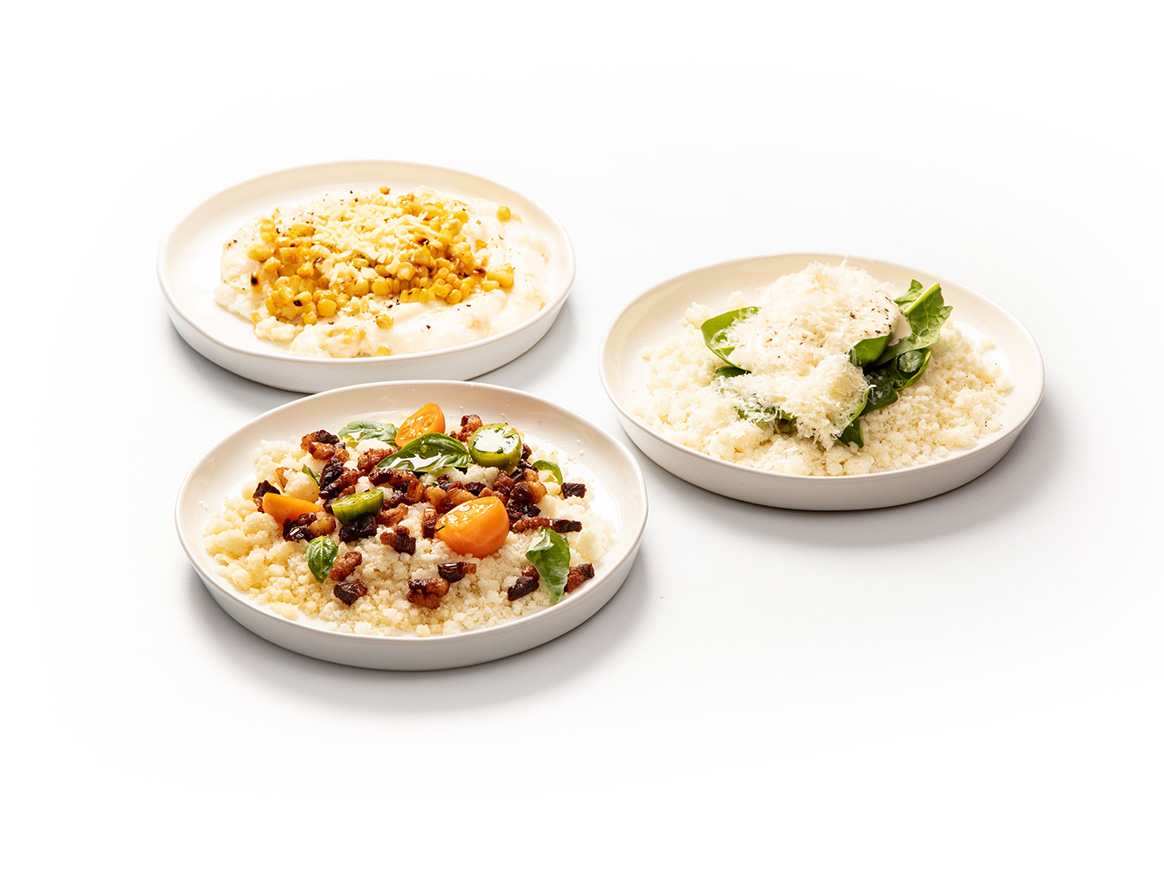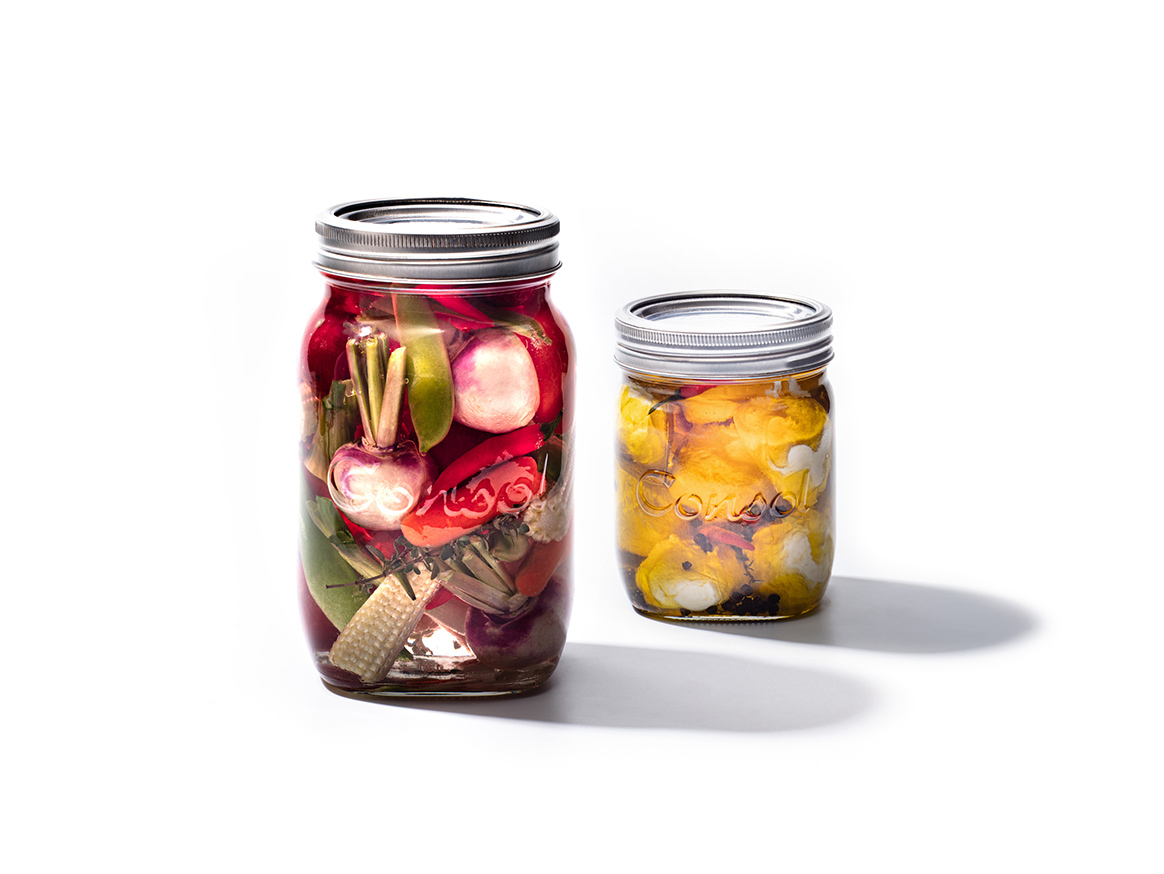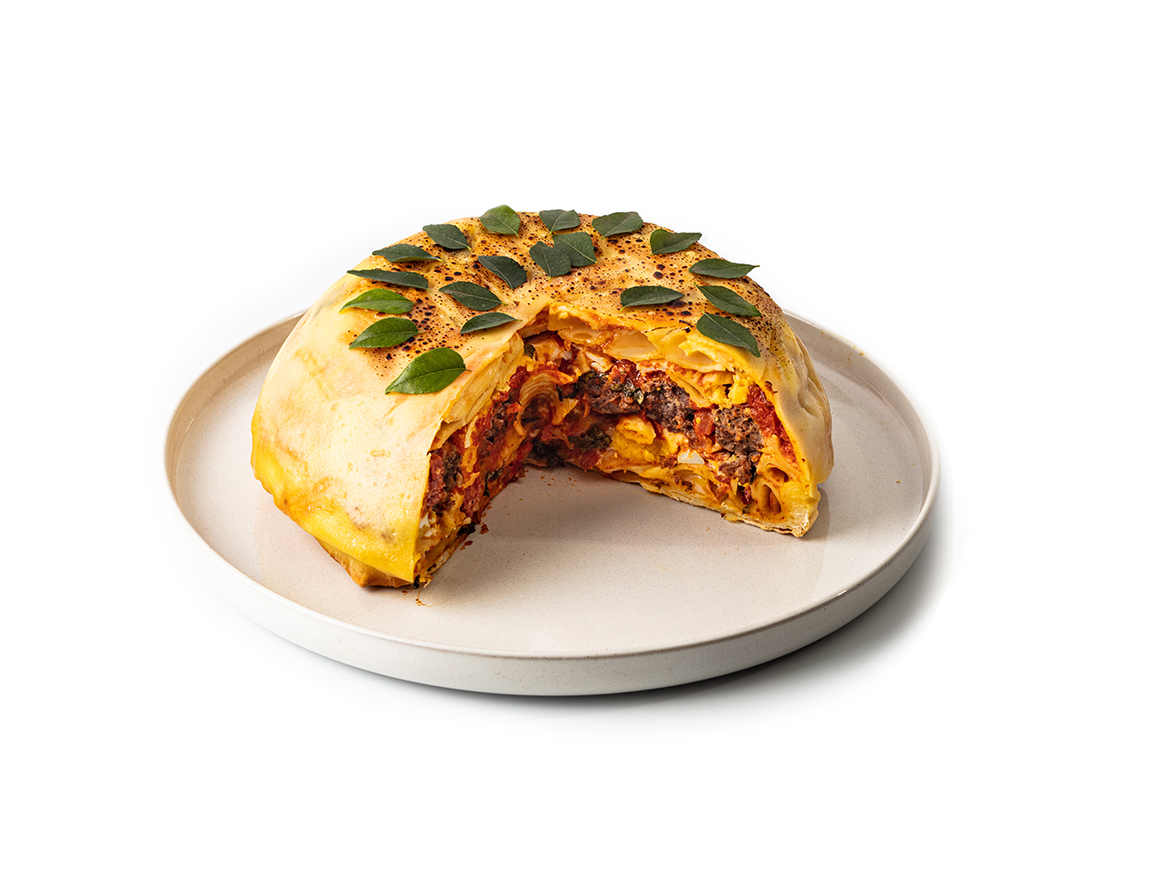The JAN Food Dictionary
COOKING WITH WORDS IN SOUTH AFRICA, FRANCE AND ITALY
Having a South African restaurant in France means you have to answer a lot of questions. It can often feel like having to explain yourself, especially when the cinnamon is a bit too prominent for someone’s taste, or you get that question mark flitting across someone’s face when you serve them vetkoek or bobotie. On the other hand, working as a chef in France is language all unto itself, especially when talking about cutting and cooking techniques. This “dictionary” is a notebook of all those words that I’ve encountered over the years that have made me wonder what they mean, or that I’ve had to explain to others, wherever I’ve travelled.
A
Agar agar
| eɪɡɑːrˈeɪɡɑː |
A natural, vegetarian form of gelatine derived from red algae. It has 3 – 4 times the thickening power of ordinary gelatine.
Get my recipe for rosé wine and grapefruit jellies (made with agar agar) on page 71 of JAN the Journal Volume 8!
Al dente
| al ˈdɛnteɪ |
When an ingredient, especially pasta, is cooked, but still firm to the bite.
Amagwinya
| amaˈgwiːɲa |
The isiZulu word for fried bread of Dutch origin, also known as vetkoek.
Get my recipe for vetkoek and curry mince here!
Amasi
| æˈmɑ:si |
A fermented milk beverage similar to buttermilk, but more similar in taste to cottage cheese or yoghurt.
Amuse-bouche
| əˌm(j)uːzˌbuːʃ |
A single, bite-sized course served at the beginning of a meal to excite a person’s palate and set the tone for the meal ahead.

Apéritif
| əˌpɛrɪˈtiːf |
A light alcoholic beverage served before a meal, usually sherry or champagne to stimulate the appetite.
Au poivre
| oʊ ˈpwav rə |
French term meaning “with pepper”, used to describe meats coated in coarsely ground peppercorns or served with a pepper sauce.
B
Bâtonnet
| bɑ.tɔ.nɛ |
Cut into a block measured by 1,26cm by 1,26cm by 7cm.
Bias Cut
| ˈbʌɪəs kʌt |
Slicing, not directly across, but at an angle.
Biltong
| ˈbɪltɒŋ |
Classically made with dehydrated beef, biltong is a dehydrated slab of meat that is flavoured with coriander seeds, black pepper, brown sugar, and salt and vinegar. Variations on the theme include blare biltong (thinly sliced, then dried), biltong chunks, and bacon biltong. Luuks!
Blanch
| blɑːn(t)ʃ |
Briefly plunging ingredients into boiling water and then plunging them into ice water to stop the cooking process.
Boerewors | ˈbʊərəvɔːs | (see Wors)
Boerseep
| ˈbʊərsɪəp |
Although making your own soap from beef fat might sound like something from the Middle Ages, it’s incredible to think that it was once the norm. As old-fashioned as it sounds now, it meant nothing was wasted, which is growing more and more relevant today. Boerseep is also one of the most versatile soaps I’ve come across, equally good for washing your hands (it’s so creamy) or getting rid of even the most persistent stains on your tablecloth.
Get my recipe for boerseep on page 106 of JAN the Journal Volume 7
Boiling
(ˈbɔɪlɪŋ)
When boiling, the liquid is in full motion, doing what it’s been wanting to do since you first introduced heat to the equation. When water is in fast motion, it prevents the ingredients from sticking (think pasta) while cooking rapidly, meaning it won’t go all soggy, and because it cooks fast, it retains more flavour. Boiling for too long, however, undoes all that is good about food.
Boscia tree
| ˈbɒzkɪə triː |
Boscia albitrunca
Belonging to the caper family, this specimen is found predominantly in the Kalahari, and has roots extending up to 68 metres deep, making it the plant with the deepest known root system on earth. The berries can be used in jus, the roots can be dried and ground up into a naturally decaffeinated coffee-like drink.
Bouquet Garni
| bəʊˈkeɪ ˈɡɑːni |
A collection of herbs, gathered and tied into a bundle/sachet in cheescloth/muslin and used to enhance flavour of stews, broths or stocks.
Buy my personal blend of bouquet garni salt here!
Braaibroodjie
A local cheese sandwich grilled on an open fire.
Get my favourite braaibroodjie recipes here.
Braise
| breɪz |
Low and slo are the operative words here. Braising is exactly the same as simmering, but you’re essentially cooking the meat in a small amount of water on a low heat with the lid on, intensifying the flavour of the dish.
Great for: Cooking inexpensive, tough cuts of meat, like pork shoulder, but works wonders with a bland chicken breast as well.
Brûlée
| ˈbruːleɪ |
French word for burnt. Refers to food being burnt or caramelised such as a crème brûlée
Try my crème brûlée doughnuts here!
Brunoise
| bruːˈnwɑːz |
To cut into small blocks, of 3mm by 3mm by 3mm. Think sophisticated garnish, like a pickled cucumber in aïoli. Start by julienning your vegetable, which could be anything from a gherkin to a carrot, then cut it into smaller pieces.
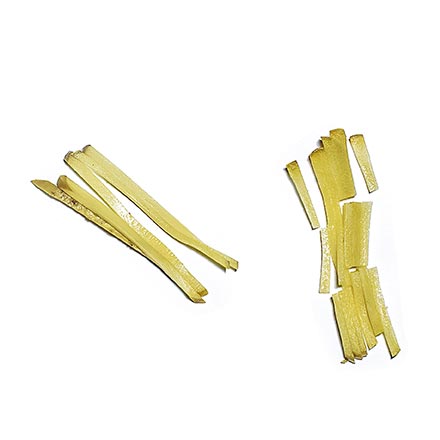
C
Cape Malay
| keɪp məˈleɪ |
Traditional South African cuisine that exhibits strong Southeast Asian influences from the 17th century Dutch Spice Route era.
Carré
| kɑˈreː |
This large dice is the easiest cutting technique to master, and so useful. In winter, you’ll use it for stocks and soups, and in summer, for anything from salads to cutting mangoes or melons.
Chiffonade
| ʃɪfəˈnɑːd |
A technique for slicing herbs in which the leaves are stacked, rolled and cut into long, thin strips. If you want to decorate your salad with herbs, like basil or mint, or something leafy, like spinach or lettuce, simply stack the individual leaves on top of each other, roll them up, and slice them thinly. As they release, they’ll unfold into an elegant row of green confetti.
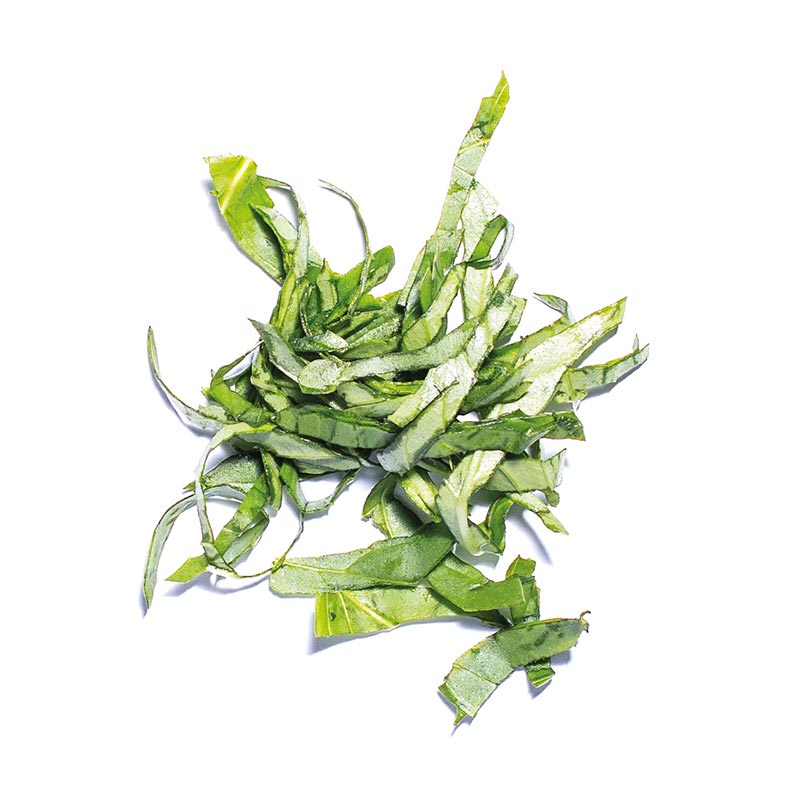
Cold fermentation
| kəʊld fəːm(ə)nˈteɪʃn |
Most of us are quite familiar with the humble sourdough. But if you’ve been proofing your dough at room temperature (especially in sunny South Africa), you haven’t yet unlocked its full flavour potential. At room temperature, you’ll only get the dough to rise, which happens as a result of the CO2 created during the fermentation process. Pop it in the fridge, and you’re making the yeast work a lot harder to create the CO2 that will make it rise (and rise it will), but the longer you leave it to do its thing (up to 5 days) the harder it works, causing it to create alcohol in the process. Hello, flavour!
Get my sourdough recipe here!
Confit
| ˈkɒnfi |
Tradionally to salt, cure, cook and store meat in fat as a way of preserving. In modern times, it is a method of slowly cooking ingredients in far at a low temperature.
Try my confit salmon salad!
Consommé
| kənˈsɒmeɪ |
It’s hard to get your head around how flavourful a clear liquid can be, but that’s the magic of consommé. And it really doesn’t ask a lot of you; it’s even called “lazy man’s soup” by some. Just mix everything and let the flavours sing to each other in the fridge overnight.
Get my tomato consommé recipe on page 117 of JAN the Journal Volume 7!
Coulis
| ˈkuːli |
A smooth purée of fruit or vegetables.
D

Deglaze
| diːˈɡleɪz |
Adding liquid such as stock or wine to a hot pan to loosen and disolve the caremlized bits of food stuck to the bottom of the pan.
Droëwors
| ˈdruːəvɔːrs |
Afrikaans for “dried sausage”, droëwors is to bilton what salt is to vinegar – it’s not always easy to choose between the two, and nor should you. It’s easy to assume droëwors is just boerewors lacking in moisture, but you’d be wrong, as the meat used in droëwors is usually leaner and more robust, which is why venison is a popular choice.
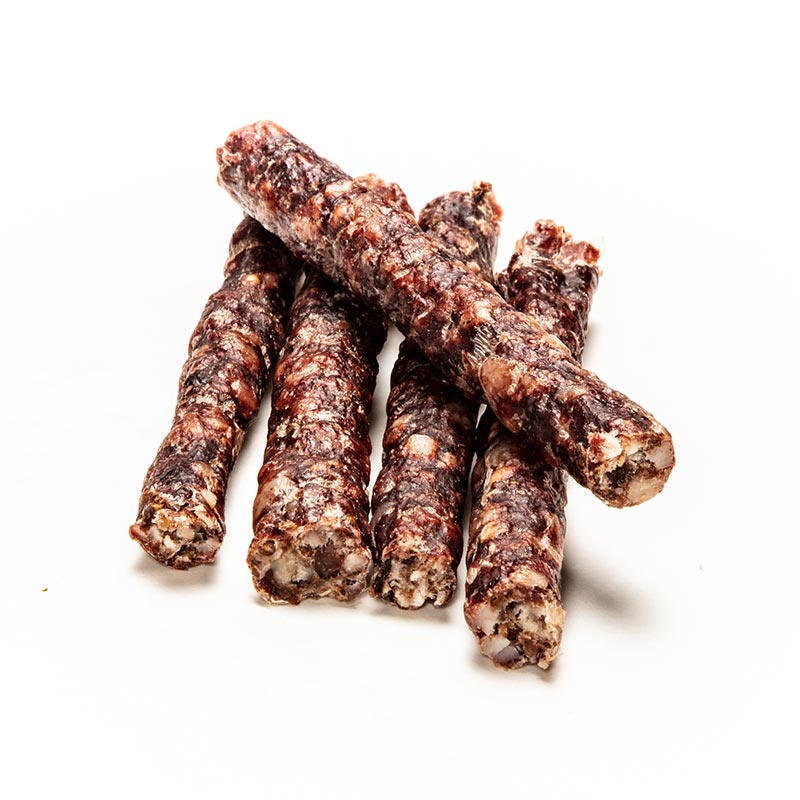
Duxelles
|ˈdʊksɛl |
A finely chopped mixture of mushrooms/mushroom stems, shallots, herbs and then sautéed in butter and reduced to a paste.
Get my recipe for Beef Wellington here!
E
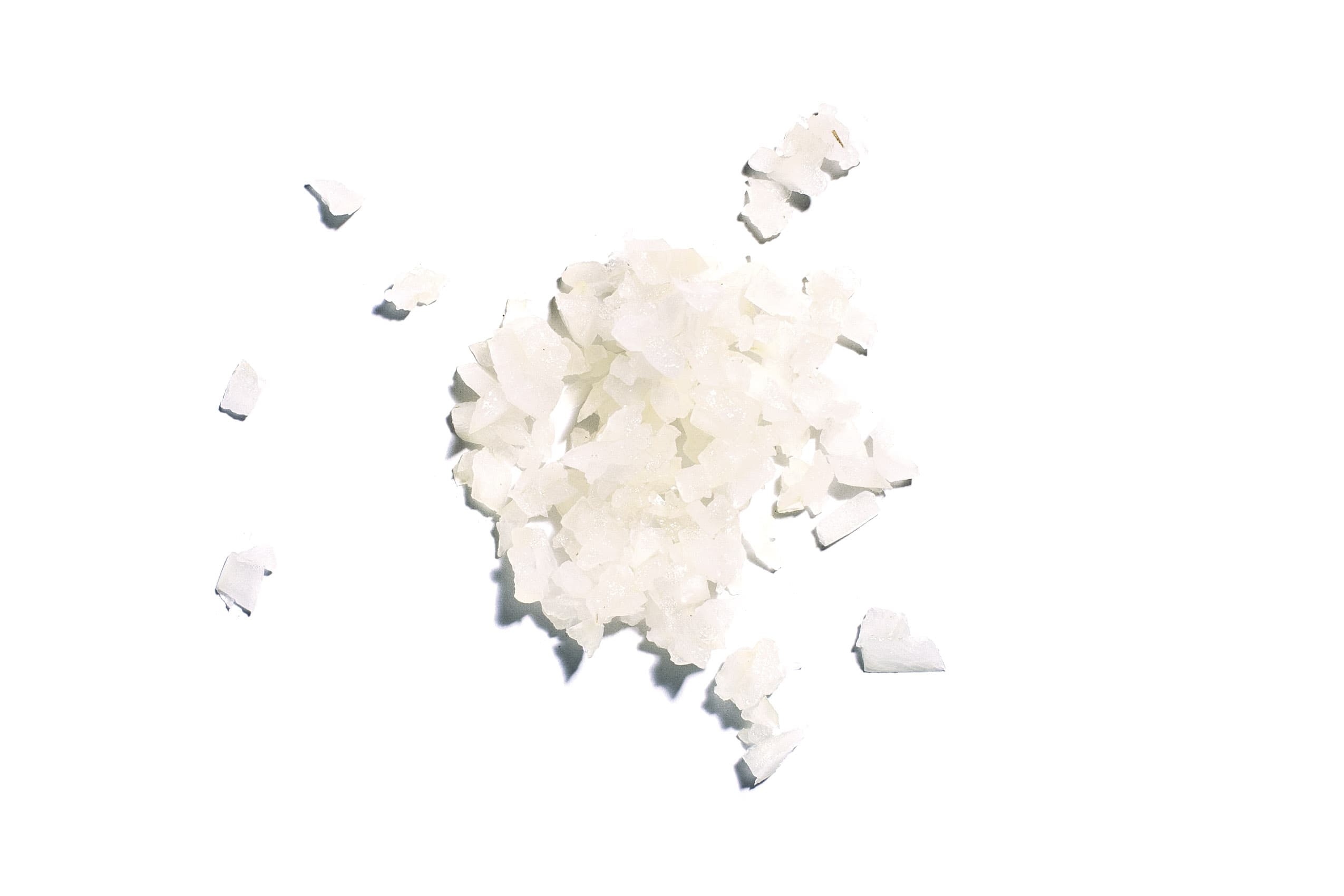
Émincer (to mince)
| emɛ̃se |
To slice thinly. There’s nothing ambiguous about this technique. It’s basically a very fine dice perfect for steak tartare, garlic, ginger and onions.
F
Fermentation
| fəːm(ə)nˈteɪʃn |
During fermentation, carbohydrates (yum) transform into carbon dioxide (bubbly, beer, kombucha), acid (cured meats, pickled things, bread) or alcohol (wine, beer, spirits) – or all of the above at the same time. Basically, it happens like this:
- Microorganisms (yes, bacteria) get starved of oxygen, so they resort to stress eating, feeding on sugars (sound familiar?) for energy (and comfort, of course). There are some organisms, like yeast cells, that live to ferment things, even when there’s more than enough oxygen to go around.
- What separates fermented food from the fresh variety is that the former contains enzymes that are already hard at work digesting the food for you. This is helpful to know, because we’re only born with a finite number of digestive enzymes. After that, we depend more and more on enzyme-rich foods to move proceedings along.
- Apart from coming standard with valuable probiotics, fermented foods stimulate your tummy to create antibiotic, anti-tumoral, antiviral and antifungal substances (it’s a win-win scenario, really), and create an acidic environment in the gut that wards off harmful pathogens. To boot, it increases the vitamin and mineral content in food and helps us break down the phytic acid (an anti-nutrient) present in foods like grains, legumes, seeds and nuts.
See also: Cold Fermentation
Try my kombucha recipe from JAN the Journal Volume 7!
Fleur de Sel
| ˌflər də ˈsel |
Literally translated as “flower of salt”, this particular salt is mined on the west coast of France from sea salt beds on the water’s surface, and boasts a purity that is hard to find in other salts.
G
Gemsbok cucumber
| gɛ́mzbɔk ˈkjuːkʌmbə |
Acanthosicyos naudinianus
A spined fruit that grows between 4 to 12 cm long. They start out green and become a pale yellow when ripe. The fruit makes a great jam and is also used to make vinegars.
Gort
| xɔːt |
A staple at Klein JAN, gort is the Afrikaans word for barley (or groats to be specific).
H
Hanepoot
| ˈhɑːnəpuːt |
A variety of Muscat grape used to make dessert and fortified wines, also considered one of the oldest genetically unmodified vines in existence.

I
Infusion
| ɪnˈfjuːʒn |
A great way to extract flavours from a vegetable by soaking it in water or oil. It’s basically steeping food.
J
Jodetert
It’s a bit of mystery why it is called a Jewish tart, although some people in the Jewish community say it does bare a slight resemblance to a similar cake called a Napoleon or Tort Medovik. The Jodetert is an Afrikaans showstopper – layers of cake or biscuit filled with custard that is popular at bazaars and baking competitions.
Get my Jodetert recipe on page 236 of JAN the Journal Volume 8!
Julienne
| ˌʒuːlˈjɛn |
To cut into small thin pieces, the size of a matchstick, measured by 3mm by 3mm by 5mm. This is probably one of the best-known cutting techniques. It’s the go-to method for preparing a stir fry, rainbow salad or marmalade, and it’s very easy on the eye. The method is super simple – just cut whatever you’re julienning into ultr-thin, matchstick-like strips, and voilà!

K
Kalahari Desert Salt
| ˌkaləˌhɑːrɪ ˈdɛzət sɔːlt |
No matter what adjective you put in front of it, all salt comes from the ocean, even salt that is mined in the Kalahari. Wherever you find a naturally occurring salt pan, it means that the region once lay at the bottom of the sea. Many underground lakes, as is the case in the Kalahari, continue to replenish these salt reserves with residual minerals that remained behind when the continents shifted, and the oceans displaced. Because of the introduction of plastics to our oceans, desert salt is often considered purer than sea salt.
Kalahari Truffles | ˌkaləˌhɑːrɪ ˈtrʌfls | (see N’abbas)
Kosher Salt
| ˈkəʊʃə sɔːlt |
In traditional Jewish cooking, Kosher salt – considered very pure with no additives – was used to extract blood from the meat, a process known as koshering. Although it’s often used in pickling, Kosher salt also makes a great everyday cooking salt, as it is affordable and great tasting.
L
Lekker
| ˈlɛkə |
A versatile Afrikaans word that means “delicious” in a food context. It can also mean “good”, “pleasant”, “tipsy”, “well” and “very” (as in, he was very drunk).
M
Maketaan
| ˌmɑːˈkɪtɑːn |
Citrullus lanatus
A wild type of watermelon that is not suited for eating fresh but is nevertheless a firm favourite in many South African homes, often preserved as candied melon pieces paired with cheese or poached in kombucha for a more savoury palate.
Melktert
| ˈmɛlktɛrt |
This is the one dish that we’ve served at Restaurant JAN since opening our doors for the first time in 2013. Milk tart must be South Africa’s most iconic sweet treat. In the early days of the milk tart, it was more of a pap, which was flavoured with almond, naartjie peel, cinnamon or peach leaves. Vanilla came later. The traditional base is usually made with homemade flaky or puff pastry, but the modern milk tart is often made with short crust pastry, oor sometimes even nude – with no pastry – which technically classifies as more of a custard tart.
Get my ultimate milk tart recipe on page 170 of JAN the Journal Volume 8!
Meunière
| ˌməːˈnjɛː |
To coat with flour, sauté in butter and finish with lemon and parsely.
Get my Sole Meunière recipe in JAN the Journal Volume 5!

Mirepoix
| ˌmɪəˈpwɑː |
A diced mixture of onions, carrots and celery used as a base in making stocks, sauces and soups.
Mise en place
| miz ɑ̃ plas |
“Things in its place” , to gather and arrange all ingredients and tools needed for cooking.
Moerkoffie
Still a staple for many farmers, this extra-strong coffee is boiled in a pot over a fire, whereafter a hot coal is dropped directly into the vessel to push down the coffee grounds.
Motlhopi Root Coffee
The Shepherd tree (Boscia Albitrunca), known as Motlhopi in Setswana, is an evergreen tree indigenous to Southern Africa. The coffee is made by grinding the roots into a fine aromatic powder.
N

N’abbas
| əˈbɑːs |
Kalaharituber pfeilii
The Kalahari truffle – also known as kuutse, mahupu or n’xaba – is a rare occurrence and said to only sporadically appear every four years because they are so dependent on atmospheric events. N’abbas have an ever-so-mild, earthy taste paired with a light, mushroom perfume that makes for a welcome addition to almost any dish.
Nappe
| nap |
When a sauce is thick enough to coat the back of a spoon, and hold a clean line drawn across with your finger.

O
Oepsie
| ˈʊpsi |
Thinly sliced warthog wrapped around a breadstick.
Get my spek oepsie recipe on page 201 of JAN the Journal Volume 7
P
Pap
| pap |
White maizemeal, a traditional South African staple enjoyed across all cultures.
Get my 12 pap recipes here.
Paysanne
| ‘pā¦zan |
A rustic/uneven style of cutting vegetables into shapes that are less precise and follow the natural contour of a vegetable. Nothing makes a novice go “phew” like the words “country style”, the English translation of this French word. To. Me, though, it translates as “anything goes”, so paysanne away. This is the let-your-hair-down, whip-up-a-quick-family-meal, informal style of cutting that we deserve (every day).
Petrichor
| ˈpɛtrʌɪkɔː |
The earthy scent produced when rain falls on dry soil. The water curtain as you enter Klein JAN is infused with petrichor.
Pickling
| ˈpɪklɪŋ |
While sauerkraut and kimchi are usually made from cabbage, you can pickle any number of fruit or vegetables. In essence, when a fruit or vegetable leaves the plant on which it grew, fermentation (and decomposition) kicks in straight away. In some cases – as with apples, pears, bananas, avos and mangoes, to name a few – the fermentation process post-picking ripens the fruit further. Ethylene deficient fruits like the berry family (blueberries, strawberries, cherries and grapes) – as well as grapefruits, lemons and limes – on the other hand, stop ripening, meaning their flavour won’t develop any further after they are picked.
Poaching
| pəʊtʃɪŋ |
There are three ways to poach things: submersion poaching (as you would an egg), shallow poaching (meringues are only partially submerged when making a floating island), and par-poaching (when the ingredients are cooked halfway and then placed in the poaching liquid to cook further). You can use many liquids when poaching, including water, wine, bouillon, milk, stock, butter, lemon juice or broth, but acid is often added to the liquid if it isn’t already acidic, as well as herbs and spices for added flavour.
Great for: Eggs, fish (especially fatty fish, like salmon), chicken, asparagus, carrots or potatoes, as well as shellfish, like prawns.
Q
Qaphela!
| ǃaˈpʰɛːla |
One of the most helpful words in the kitchen, qaphela means “Look out!” in isiXhosa.
Quenelle
| kəˈnɛl |
An elliptical shape moulded from soft foods using two spoons
R
Reduce
| rɪˈdjuːs |
Thicken and intensify the flavour of a liquid by simmering or boiling.
S
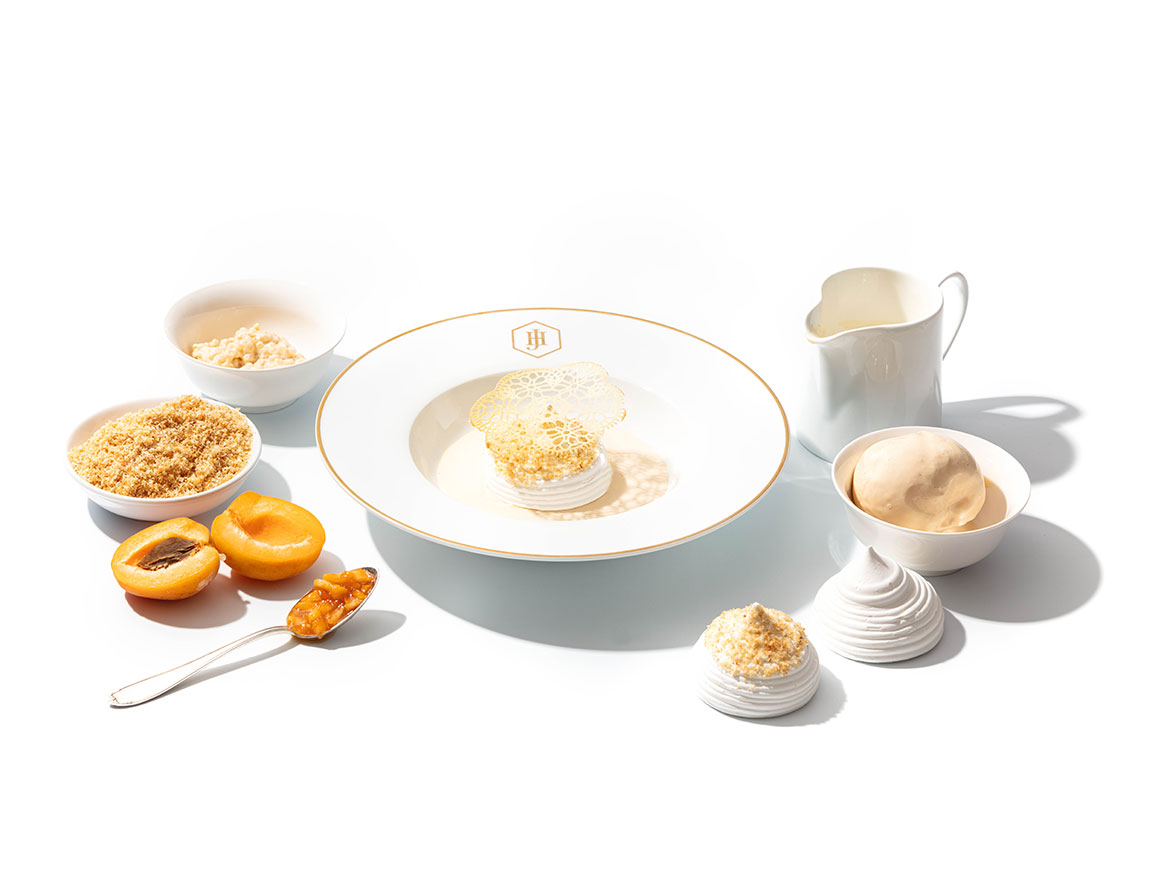
Sago
| ˈseɪɡəʊ |
This traditional South African dessert closely resembles rice pudding, and is often served at family gatherings.
Get my recipe for meringue filled with sago pudding here!
Sel gris
| sˈɛl ɡɹˈɪs |
“Grey salt” is essentially fleur de sel, but occurs when the salt dips below the surface, soaking up various marine minerals (hello flavour) that give it a greyish colour.
Simmering
| ˈsɪmərɪŋ |
Simmering is like boiling, but more of a tease, and a much slower process. It’s when the water starts to move – just below boiling point – but the bubbles don’t break to the surface, even though they’re trying to. Meats that are simmered, for instance, retain more flavour and a soft, flaky texture than when they are boiled. Simmering is also a great way for “cooking out” the fats in a stock that turn it cloudy.
Great for: Fibrous root vegetables, like potatoes, turnips and beets, as well as stocks.
Skilpadjie
Named after its apparent resemblance to a turtle, the skilpadjie comprises a portion of lamb’s liver wrapped in kidney fat. As you can imagine, they’re absolutely packed with flavour.
Skuinskoek
Directly translated at “skew cake”, this blast from the past is essentially a ball of mosbolletjie dough, deep-fried to a golden shine like a vetkoek. When it gets old, simply cut it into tiny slices and dry out like a bruschetta. Then, use it like a cracker and try it with a creamy cheese.
Slaphakskeentjies
A traditional South African salad made with baby onions, mustard, and wine vinegar.

Soetkoekies
| sʊtˈkʊkis |
In a way, these super traditional biscuits resemble speculoos biscuits, but in typical South African fashion, don’t hold back on the spices. In the old days, they were marked with a red dot made of food colourant, but these days, you can style them with any garnish you wish, from nuts to glazed cherries.
Get my Ouma’s soetkoekie recipe on page 296 of JAN the Journal Volume 6!
Souttert
While a quiche really epitomises the concept of a light lunch, a souttert just tastes like home to many South Africans – and feels less fussy than the prescriptive French version. The thing about a souttert is that you can really get creative with the fillings.
Get the recipe for my favourite souttert here!
Spekboom
| ˈspɛkbʊəm |
A small-leaved local succulent plant widely lauded for its health benefits and ability to produce vast quantities of oxygen.
Springbok cucumber
| ˈsprɪŋbɒk ˈkjuːkʌmbə |
Cucumis africanus
A small, spined fruit that comes in an array of colours from green to orange. The leaves are known to be rich in calcium and vitamin c, while the fruit has been a valuable source of water in this arid region for millennia. When the bitter fruit are separated from the more neutral-tasting ones, they are used for pickling, and can also be eaten raw.
Steaming
| ˈstiːmɪŋ |
Ideal for lightening up a meal, steaming is great for springtime cooking. It cooks food more gently than boiling or simmering, as the liquid never touches the food, so you won’t easily overcook or burn a dish. Ingredients also retain their shape, colour, flavour and texture better.
Great for: Asian classics (dumplings, fish) and almost every vegetable except the spongy kind (e.g. mushrooms or aubergines) or super tough ones, like root vegetables. Chicken breast and shellfish also respond well to steaming.
T
Tempering
| ˈtɛmpərɪŋ |
Slowly add hot liquid to eggs whilst sturring quickly to slowly bring the mixture up to temperature without curdling/scrambling the eggs.
Truss
| trʌs |
To secure poultry/meat with string or skewers to hold its shape whilst cooking.
U
Umqombothi
| umǃomˈboːtʰi |
A traditional sorghum beer enjoyed across Africa, from Burkina Faso and Nigeria to Zimbabwe and Bantry Bay in Cape Town. According to Athena Lamberis
of The Culinary Linguist, it is considered rude to drink umqombothi while standing. As is the custom, this traditional beverage is best enjoyed during a gathering, preferably while sitting in a circle, before or after a meal. Umqombothi is primarily used as an offering during ceremonies or rituals, and remains an integral part of various cultural and spiritual ceremonies.
Get my Umqombothi recipe on page 200 of JAN the Journal Volume 7!
V
Vetkoek
| ˈfɛtkʊk |
Directly translated as “fat cake”, vetkoek is made of a yeast dough that is deep-fried in oil.
Get my quick and easy version of vetkoek here.
W
Wag-‘n-Bietjie
| vɒx ə biːkiː |
Ziziphus mucronata
Known as the buffalo thorn, this tree’s hooked thorns point forwards and backwards. Should you get caught in them, the tree makes you “wag ‘n bietjie” (Afrikaans for “wait a while”) before you can escape. The leaves can be crisped as a garnish for bite-sized snacks.
Wors | vɔːs | (also known as Boerewors)
Also called boerewors (farmer’s sausage), this uniquely South African delicacy is often made from both beef and lamb, and spiced with coriander seeds, black pepper, nutmeg, cloves and allspice.
Get my recipe for boerewors timpano here!
Worsrolletjie
Afrikaans for a barbeque sausage roll, filled with wors, a typical South African sausage that is prepared on an open fire and served with tomato and onion relish.
X
Xigugu
| ʃiɡuːɡuː |
A staple in the Tsonga-Shangaan culture, this truly delicious in-between snack is made of roasted maize and peanuts that are blended into a smooth paste. It has often been compared to salted caramel or peanut butter fudge, but the taste experience is entirely unique. Xigugu has a beautifully full-mouth feel, as it is lightly textured but smooth, with notes of sweetness and smokiness.
Y
Yuzu
| ˈjuːzuː |
All the rage in wellness circles (think juices and yuzu-flavoured snacks), this citrus originated in China about 1,000 years ago. Because it grows on bushes with sharp thorns, harvesting is more difficult than with most other citrus varieties, which explains the usually lofty price point.

Z
Zhoosh
| ʒʊʃ |
A recent addition to the English language, the word refers to making something more appealing or exciting. So helpful when talking about styling a dish.

